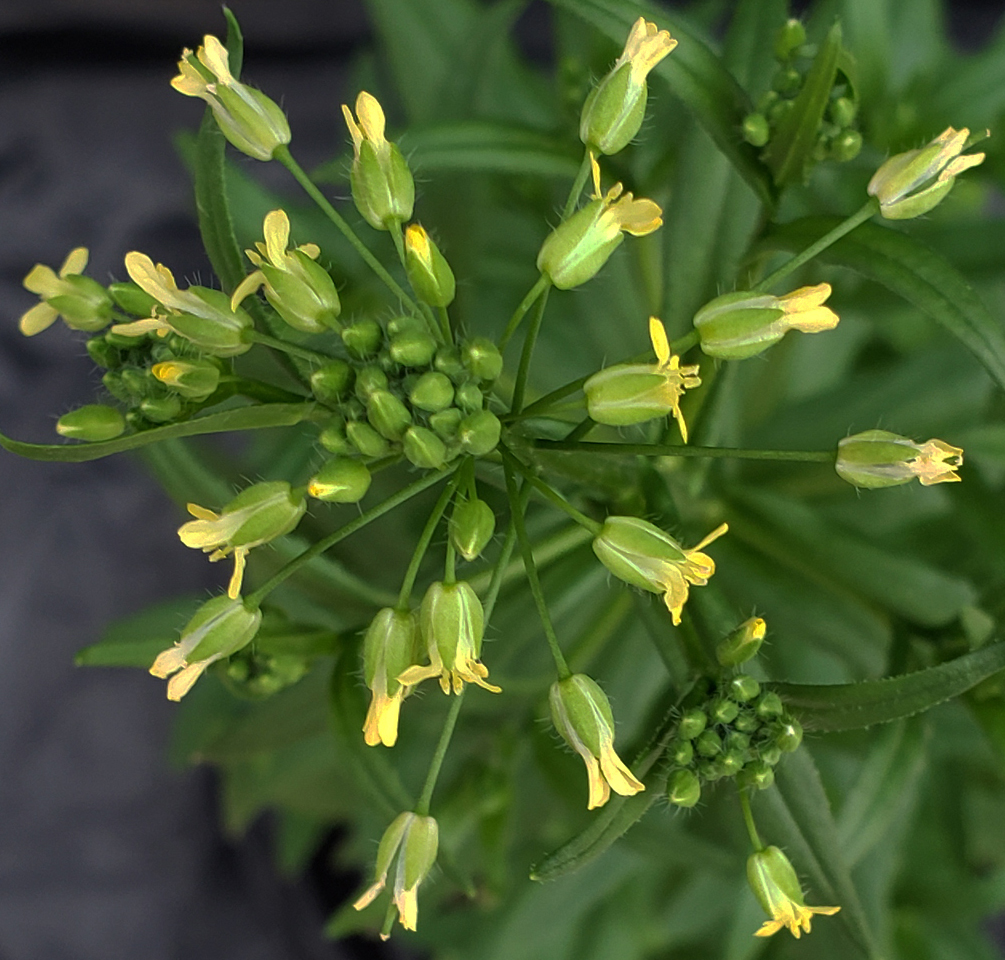Researchers at Michigan State University are working to clear the runway for a new source of cleaner, more sustainable biodiesel and jet fuels derived from a relative of cabbage and cauliflower.
With $2 million in funding from the U.S. Department of Energy, MSU scientists are helping unravel the complex genetics of a plant named Camelina sativa. This knowledge will better equip researchers to improve the plant’s oilseed yield and establish it as a more viable alternative to current petroleum-based fuels that meet the unique demands of air travel.

“We might have electric and hydrogen-powered cars, but we’re not going to have electric or hydrogen planes anytime soon,” said Erich Grotewold, a professor in the College of Natural Science and the Department of Biochemistry and Molecular Biology.
Meanwhile, camelina oil is already found in some fuel blends used for transportation.
“Camelina makes oils with very specific properties that are very useful for aviation,” Grotewold said. “For example, biodiesel from camelina won’t freeze at 30,000 feet.”
Furthermore, the tools and techniques developed by the MSU team will be applicable to a wide range of other important crops, said the project’s coleader, Patrick Edger, an associate professor in the Department of Horticulture.
“Camelina is the right system to be working on for developing improved biofuels. It’s going to be an instrumental crop for sustainability,” said Edger, whose lab is in the College of Agriculture and Natural Resources. “At the same time, all of the major discoveries we make will translate to other important crops.”
This isn’t Grotewold’s first time working with camelina. In fact, he’s currently part of another DOE project that launched in 2017 aiming to boost the plant’s yield. But it became evident there was a ceiling to the research without a more comprehensive way to study the plant’s genetics.
“A couple of years ago, I started talking with Pat and it became clear that his lab has a number of interesting tools and lineages that complement what we have in mine,” Grotewold said. “We felt we could advance the camelina research field by better establishing the plant as a model system.”
The DOE agreed, awarding the MSU team the new $2 million grant. The project aligns with the agency’s goals related to camelina specifically and, more broadly, to empower research into plant systems with applications in energy and bioproducts, said Catherine Ronning of the DOE Office of Science.
“We were looking for innovative approaches to increase efficiency in determining the molecular function of previously uncharacterized genes thought to play a role in important processes,” said Ronning, a program manager with the Office of Science’s Biological and Environmental Research program.
“I am beyond excited about this research and collaborating with the Grotewold lab,” Edger said. “It’s going to let us answer questions together that we couldn’t individually.”

